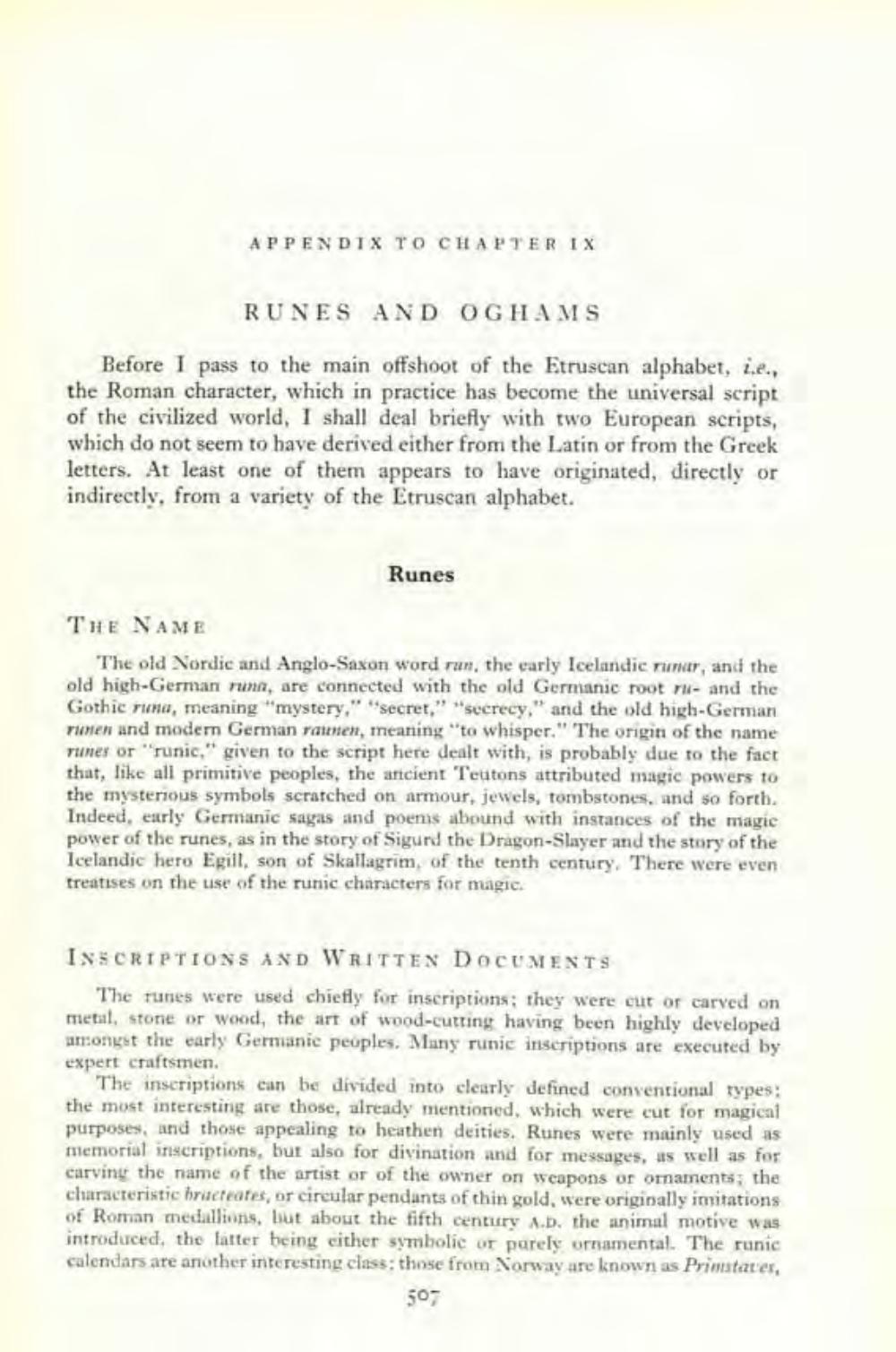________________
APPENDIX TO CHAPTER IX
RUNES AND OGHAMS
Before I pass to the main offshoot of the Etruscan alphabet, i.e., the Roman character, which in practice has become the universal script of the civilized world, I shall deal briefly with two European scripts, which do not seem to have derived either from the Latin or from the Greek letters. At least one of them appears to have originated, directly or indirectly, from a variety of the Etruscan alphabet.
Runes
THE NAME
The old Nordic and Anglo-Saxon word run, the early Icelandic runr, and the old high-German runn, are connected with the old Germanic root ru- and the Gothic runa, meaning "mystery," "secret," secrecy," and the old high-German reen and modern German rammen, meaning "to whisper." The origin of the name Tuner or "runic," given to the script here dealt with, is probably due to the fact that, like all primitive peoples, the ancient Teutons attributed magic powers to the mysterious symbols scratched on armour, jewels, tombstones, and so forth. Indeed, early Germanic sagas and poems abound with instances of the magie power of the runes, as in the story of Sigurd the Dragon-Slayer and the story of the Icelandic hero Egill, son of Skallagrim, of the tenth century. There were even treatises on the use of the runic characters for magie.
INSCRIPTIONS AND WRITTEX DOCUMENTS
The runes were used chiefly for inscriptions; they were cut or carved on metal, stone or wood, the art of wood-cutting having been highly developed amongst the early Germanie peuples. Many runic inscriptions are executed by expert craftsmen.
The inscriptions can be divided into clearly defined conventional types: the most interesting are those, already mentioned, which were cut for magical purposes, and those appealing to heathen deities. Runes were mainly used as memorial inscriptions, but also for divination and for messages, as well as for carving the name of the artist or of the owner on weapons or ornaments; the characteristichrutereares, or circular pendants of thin gold, were originally imitations of Roman medallions, but about the fifth century A.D. the animal motive was introduced, the latter heing either symbolic or parely ornamental. The runic calendars are another interesting class: those from Norway are known as Primatter,
507




